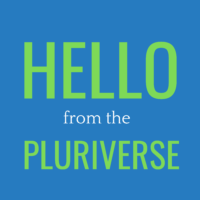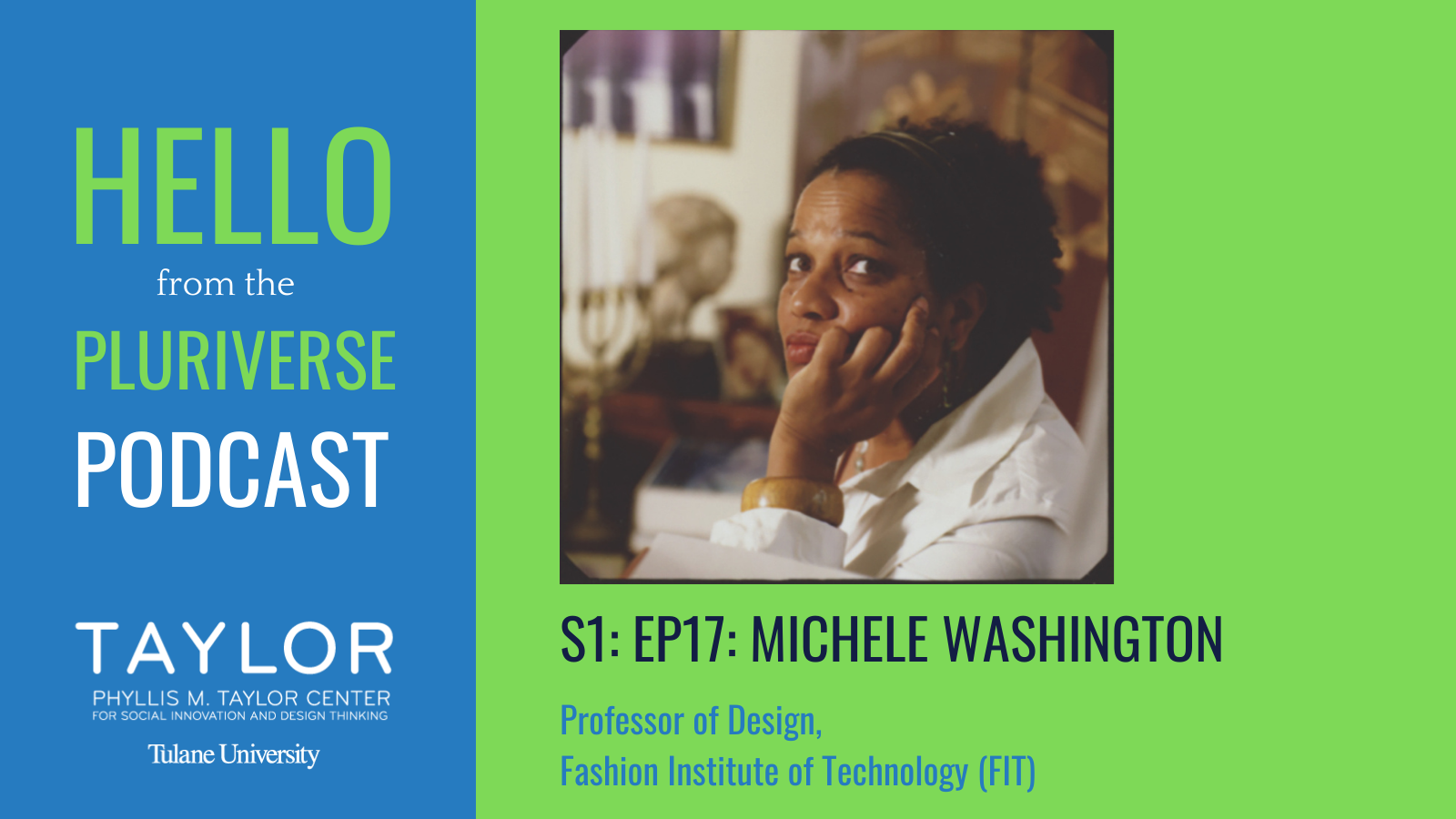“What if? How come? Why?”
Michele Washington is a user-centered designer based in New York City. She has a MS in Communication and Design from the Pratt Institute and an MFA in Design Criticism from The School of Visual. Currently, Ms. Washington teaches design at the Fashion Institute of Technology (FIT) in New York City. Her latest design interests include pure research, strategic planning, and branding. Michele works with numerous non-profit organizations, cultural institutions, and start-up companies to refine strategic plans, revamp websites, and/or develop products.
Connect with Michele Washington:
Twitter: @culturalboundar
Instagram: @culturalboundaries
Pluriverse Publication Chapter: Michele Washington
Written by Jimmy Rogers and edited by Natalie Hudanick
Download the PDF Layout of the Michele Washington chapter in the Pluriverse Publication.
“What if? How come? Why?” – Michele Washington
Michele Washington is a user-centered designer based in New York City. Ms. Washington was first made aware of design thinking’s existence when she was living in Chicago, Illinois in the early 1990s. She had friends who worked at the Doblin Group, an innovation consulting firm who she claims founded design thinking even if they hadn’t articulated its principles, who introduced her to the unique way of approaching problems. Ms. Washington also had several critical mentors, including Ron Clark of the Doblin Group, Colleen Diaz, Sean McGregor, and John Cain, who inspired her to enter the design thinking realm and approach problems from a different perspective. This initial interest in design thinking led her to New York City where she pursued a MS in Communication and Design from the Pratt Institute and a MFA in Design Criticism from The School of Visual.
Throughout her many experiences, Ms. Washington has lived in Chicago, IL, Minneapolis, Minnesota, and Norwalk, Connecticut, as well as various cities throughout New York and New Jersey. Her initial design experiences involved print publishing (e.g., newspapers, magazines, books, etc.), but she then transitioned to the non-profit/citizen sector and even had her own studio space. At that point she had been using the classic principles of design thinking without even telling her clients she was doing so. Instead, she focused on conducting background research, understanding her customers and important stakeholders (i.e. empathy-building), and determining clear goals, which are some of the hallmarks of design thinking.
Currently, Ms. Washington teaches design at the Fashion Institute of Technology (FIT) in New York City. Her latest design interests include: 1) pure research, 2) strategic planning, and 3) branding. Professionally, she works with numerous non-profit organizations, cultural institutions, and start-up companies to refine strategic plans, revamp websites, and/or develop products. Interestingly, she does not mainly design for individuals in New York City, rather, she is conducting research and actively rebranding a company out of Chicago, IL. Ms. Washington credits her success in design thinking to her open-mindedness and “organic” problem-solving methodology. She also noted that her collaborators are important in designing for specific audiences. These peers include other researchers and designers, content writers, website developers, etc. Ms. Washington also stated that in our contemporary workforce, no matter the field, “projects are always done in multidisciplinary and collaborative environments”. She works with people from many different backgrounds and has found that by working with these diverse professionals, she can fill in the gaps in her own knowledge to design successful projects more efficiently.
When asked how she feels her place and identity influence the work she does as a design thinker, Ms. Washington stated her belief that some of the principles and theories of design thinking do not always address her as a woman of color. She shared her design thinking and human-centered design standpoint that focuses on and considers “what if, how come, and why?”. She stated that there are certain issues that she can best address as a woman that others simply do not have the experience to tackle. Ms. Washington believes that minorities provide an innately unique framework from which to consider problems. “You have to have different voices” from people of different backgrounds and areas of expertise to ensure the “what if ?” and “how come?” questions come into play. While she does not take this “what if, how come, and why?” mindset into every design thinking venture, she does when it seems appropriate after having considered the individual goals of the project.
When asked how she would even define design thinking, Ms. Washington highlighted that she often considers this question and more generally, what design even means anymore. Her conceptualization of design thinking was unique in many ways. For example, she stated that design thinking is focused on “creating solutions, ideas, concepts, modules, and frameworks to create products and services that later move forth to generate systems”. She also added that “design thinking is your ability to listen to the other side”. Also, similar to the traditionally iterative design thinking process, Ms. Washington’s workflow is best described as “a circle or, at times, a crosshatch”. Clients often approach her with either ill-conceived or inadequate design prompts which she must then design around iteratively. She enjoys generating solutions quickly and seeing if they will work. If these preliminary solutions do not work, she goes back and tweaks them until she has designed products and/or services that make her clients happy. Ms. Washington claims that client satisfaction is the best metric for detecting whether a design thinking venture was successful or not.
In thinking on how design thinking could change in the future, Ms. Washington believes that the field could potentially change with the advent of new technology and services or simply be renamed/redefined by scholars and academics. Holistic problem-solving and a mindset of “things are not always as they seem” will be crucial for design thinking moving forward. She urges designers, design thinkers, and the general public to act with humility, empathy, and an open mind. She encourages individuals to remain open to novel ways of approaching problems.
In her advice for non-designers, Ms. Washington noted that it is best to conduct rudimentary research and stakeholder analyses before postulating solutions to specific problems in any field. She recommends that non-designers take time to consider who they are working with and how their peers’ textured experiences determine how they should act. Ms. Washington suggests that all students take courses in the humanities, public speaking, film, etc. to expand their breadth of knowledge and better solve problems in the future.
- Instagram: @hellopluriverse
- Twitter: @hellopluriverse
- Email: taylor@tulane.edu
- Subscribe to our newsletter
The Hello from the Pluriverse Podcast aims to open up and create a space to have conservations about the pluriversality in design.
This podcast is a project of the Design Thinking for Social Innovation Program at the Phyllis M. Taylor Center for Social Innovation and Design Thinking at Tulane University.
Executive Producer: Lesley-Ann Noel, Ph.D
Sound editing
- Max Esperance
- Lavonte Lucas: xn--vonni-fsa.com, Instagram: @vonnieradass, Twitter: @vonnieradass
Hello from the Pluriverse 2020-2021 Student Team
- Max Esperance – Podcast lead
- Natalie Hudanick and Michaeline Anglemire – Editors
- Tiwani Oseni – Communications
Hello from the Pluriverse 2019-2020 Student Team

